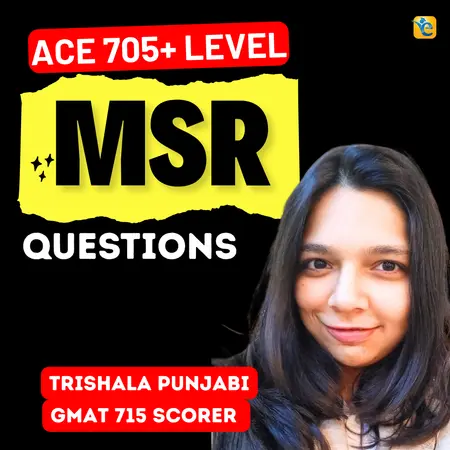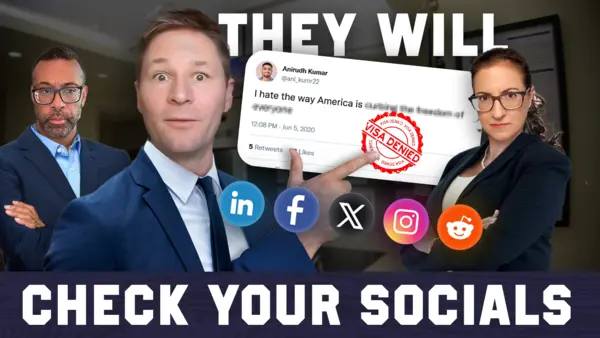Events & Promotions
|
|

GMAT Club Daily Prep
Thank you for using the timer - this advanced tool can estimate your performance and suggest more practice questions. We have subscribed you to Daily Prep Questions via email.
Customized
for You
Track
Your Progress
Practice
Pays
Not interested in getting valuable practice questions and articles delivered to your email? No problem, unsubscribe here.
- Nov 18
11:00 AM PST
-12:00 PM PST
Join us in a live GMAT practice session and solve 30 challenging GMAT questions with other test takers in timed conditions, covering GMAT Quant, Data Sufficiency, Data Insights, Reading Comprehension, and Critical Reasoning questions. - Nov 22
11:00 AM IST
-01:00 PM IST
Do RC/MSR passages scare you? e-GMAT is conducting a masterclass to help you learn – Learn effective reading strategies Tackle difficult RC & MSR with confidence Excel in timed test environment - Nov 23
11:00 AM IST
-01:00 PM IST
Attend this free GMAT Algebra Webinar and learn how to master the most challenging Inequalities and Absolute Value problems with ease. - Nov 25
10:00 AM EST
-11:00 AM EST
Prefer video-based learning? The Target Test Prep OnDemand course is a one-of-a-kind video masterclass featuring 400 hours of lecture-style teaching by Scott Woodbury-Stewart, founder of Target Test Prep and one of the most accomplished GMAT instructors.
E
Be sure to select an answer first to save it in the Error Log before revealing the correct answer (OA)!
Difficulty:
 25%
(medium)
25%
(medium)
Question Stats:
75% (01:32) correct 25%
(01:37)
wrong
25%
(01:37)
wrong  based on 7399
sessions
based on 7399
sessions
History
Date
Time
Result
Not Attempted Yet
Excavators at the Indus Valley site of Harappa in eastern Pakistan say the discovery of inscribed shards dating to circa 2800–2600 B.C. indicate their development of a Harappan writing system, the use of inscribed seals impressed into clay for marking ownership, and the standardization of weights for trade or taxation occurred many decades, if not centuries, earlier than was previously believed.
(A) indicate their development of a Harappan writing system, the use of
(B) indicate that the development of a Harappan writing system, using
(C) indicates that their development of a Harappan writing system, using
(D) indicates the development of a Harappan writing system, their use of
(E) indicates that the development of a Harappan writing system, the use of
Subscribe to GMAT Question of the Day: E-mail | RSS
For All QOTD Questions Click Here
(A) indicate their development of a Harappan writing system, the use of
(B) indicate that the development of a Harappan writing system, using
(C) indicates that their development of a Harappan writing system, using
(D) indicates the development of a Harappan writing system, their use of
(E) indicates that the development of a Harappan writing system, the use of
Verbal Question of The Day: Day 280: Sentence Correction
Subscribe to GMAT Question of the Day: E-mail | RSS
For All QOTD Questions Click Here
Kudos
Bookmarks
Quote:
A bunch of different problems come from the use of the phrase “indicate their development.” First,
“the discovery [of stuff]…” is the subject for the verb “indicate.” And that’s wrong: it would have to be “the discovery… indicates.”
Second, “their” must refer to a plural noun, and our only real options are “inscribed shards” or “excavators” – neither of which developed the Harappan writing system.
There’s a third issue, and it’s more subtle: the sentence is much clearer if we include the word “that” after indicate. Why? Well, here are two stripped-down versions of the sentence, one with “that” and one without:
- Without “that”: ”…the discovery indicated the development of a writing system… occurred many decades earlier…”
- With “that”: ”…the discovery indicated that the development of a writing system… occurred many decades earlier…”
That second sentence is much clearer, right? The sentence is trying to say that “the discovery indicated THAT {something occurred}” – so we’re much better off with “that” in the sentence.
So we have tons of reasons to ditch (A).
Quote:
(B) has the same subject-verb error as (A): “the discovery… indicate” is wrong.
The parallelism is also a problem here. In some answer choices, we have “the discovery indicates that the development…, the use…, and the standardization… occurred many decades earlier…” Cool, that gives us three parallel nouns, and it makes sense to say that the three things all happened many decades earlier.
But in (B), “the use” has been changed to “using” – so now it’s a modifier, suggesting that “inscribed seals impressed into clay for marking ownership” were used to actually develop the writing system. And that doesn’t make much sense, since the seals that marked ownership didn't have anything to do with the development of the writing system.
So again, we have plenty of reasons to eliminate (B).
Quote:
(C) has two familiar problems: first, “their” doesn’t make any sense. See the description of answer choice (A) for more on this issue. Second, the modifier “using…” doesn’t make sense, as described under answer choice (B).
So (C) is out, too.
Quote:
(D) also recycles some errors from the other answer choices. For starters, I’m not sure that “their” makes sense here, since it logically needs to refer to “Harappan”, but “Harappan” is just an adjective – not actually a plural noun. As we explained in answer choice (A), the only plural nouns earlier in the sentence are “excavators” and “shards” – neither of which would make any sense at all.
Plus, we’re much better off if the word “indicates” is followed by “that” – see the explanation of answer choice (A) for more on that issue, too.
So (D) is out, and I really really hope that (E) doesn’t suck, or else we’ll be starting over.
Quote:
Oh goody, it looks like we’re OK. The subject-verb agreement (“the discovery indicates”) is correct, “indicates” is correctly followed by “that” (see answer choice (A) for more on that issue), and the parallelism is spot-on.
So (E) is our best answer.
Kudos
Bookmarks
goodyear2013
Dear goodyear2013,
I'm happy to help with this.
Split #1: the pronoun problem. What is the antecedent of "their" --- who are "they"??? Certainly not the excavators, the only plural group of people mentioned in the sentence. Presumably, the "they" are the ancient Harappan people, but those folks are not mentioned explicitly. We mention their civilization, but not the people themselves, and on the GMAT, every pronoun must have an antecedent mentioned explicitly in the sentence. See:
https://magoosh.com/gmat/2013/gmat-pronoun-traps/
Here, the choices with "their", choices (A) & (D), are incorrect.
Split #2: the use of "that". In casual colloquial language, we can drop the word "that" after a cognitive verb such as "indicate" ---- "He indicates he's not going to movies with us." That would be understandable in colloquial language, but it doesn't measure up to the formal standards of the GMAT. We need the word "that" after the word "indicate." Choices (A) & (D) omit the word "that", and are incorrect.
That leaves us with (B) & (E). Both of these are grammatically correct, and the split is entirely predicated on logic. Choice (B) takes the form
... indicates that P, modifier of P, and R occurred many decades ....
Choice (E) takes the form
... indicates that P, Q, and R occurred many decades ....
In both of these,
P = the development of a Harappan writing system
R = the standardization of weights for trade or taxation
So the question is, that middle element, about using "inscribed seals impressed into clay for marking ownership" is a description of or modifier of P, or is it its own separate thing? Well, notice that P, the development of a Harappan writing system, is a cultural intellectual thing --- what alphabet, what grammar & syntax, etc. etc. The middle element is more tangible and more economic. If the middle element were purely writing, about making marks in clay that were clearly a form of writing, then we could imagine that the (B) structure would be correct. But, the middle element is about making impressions to mark ownership. This is not necessarily anything linguistic. These impressions might be analogous to the symbols used, say, in branding cattle. The value of marking ownership is a different kind of value, an economic value, different from the cultural/intellectual value of expressing language through writing. Therefore, we have to consider this a separate, independent element. Thus, the structure in (E) is correct, and the structure in (B) is not correct.
Remember, GMAT SC is not just about grammar. GMAT SC is also about logic, and logic always trumps grammar. For more on logic on the GMAT, see:
https://magoosh.com/gmat/2013/logical-pr ... orrection/
Does all this make sense?
Mike















